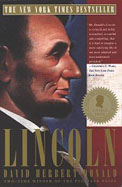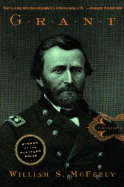Impaneled
This week I was selected for a panel. No, not that one. The day after returning from Russia I had to report for jury duty and was selected. Just what one needs to catch back up after two weeks abroad.
The trial was civil. Personal injury. Really the stereotype of an ambulance-chasing lawyer with a plaintiff trying to milk an injury for all it is worth. In July 2000 the plaintiff was riding her bike along a relatively busy road. The defendant was stopped at a stop sign, looking left at oncoming traffic. He let his foot off the brake to idle forward and did not see the biker crossing from the right. They collided. The biker toppled over onto her knee. Ambulance came. Away she went.
The biker wasn’t badly injured. No cuts, a few bruises, clothing completely intact. She hurt her knee the worst and that was the crux of the case. The emergency room sent her home with some pain med after a clear x-ray. The biker never went to see her family doc but went to a couple of orthopedic surgeons and a chiropractor. The former could never find anything wrong with the knee, though they did not doubt that she was in pain — a pain that she described as debilitating, if intermittent, and one that prevented her from biking and other exercise. She undertook physical therapy six weeks after the doctor advised it.
Therapy seemed to help, but for some reason she stopped. Then, three years and nine months later she went back to the doctor. He found water on the knee but at this point could not say whether it was a result of the impact or of non-use.

The plaintiff wanted $6,000 in medical bill compensation, about $1.7k for salary lost, $25k for loss of normal life, and $25k for pain and suffering.
As on the only other jury I’ve been on, the drama and intensity of persuasion that went on in the jury room far exceeded that in the courtroom. The jurors actually elected me foreman — which was just as well; I wanted to get out of there as soon as possible so I got to control the pace of deliberation somewhat.
It came down to the bizarre gap of time between treatments and the sense that if she truly was in debilitating, normal-life-altering pain that she would have done something in the intervening years. That her lawyer was a bumbling slimeball and the defense attorney was sharp and concise didn’t help her case at all. In the end — though there was one initial juror hold out (isn’t there always?) — we arrived at unanimity by agreeing that a sufferer bears some responsibility in the successful outcome of one’s treatment. That is, if you smack me in the head with a bat, you are at fault. But if my doctor insists I need surgery and I refuse, I can’t hold you liable for what happens because I declined surgery. This is what happened with the biker and her strange lapses in treatment and physical therapy.
We awarded her recompense for most of her medical bills up until the gap in treatment. Nothing for salary. Uh, hello, it was a salary not a wage and she testified that the doctor gave her a note for work so that she’d be paid for the missed time. Nothing for pain and suffering. Nothing for loss of normal life. In a sense, a victory for the defense.
One thing we debated a bit in the jury room was the complete absence of mention of insurance. Some jurors really wanted to focus on it. Did insurance decline to cover? But since it wasn’t mentioned we couldn’t debate it. This irritated some jurors.
So, after two days on the Cook County payroll I was $34.40 wealthier and infinitely further behind in work. I will say that it was interesting to spend a week in China then a week in Russia then come back to the USA to engage in one of the only modes of direct civic engagement short of voting or military service. I’m not saying I was humming the national anthem or anything. Just agreeably content to be reminded of something quintessentially American.
Fighter Pilot
Last year I wrote about my wife’s grandfather who had recently passed away. William Boulet was an American fighter pilot in WWII. His story is amazing. Especially interesting is his recollection of his time as a Nazi prisoner of war.* So I’ve finally digitized an interview conducted at the D-Day Museum and posted it online. (Miss you, Grandpa!)
I realize the audio is a bit low. I’d really like to use Google’s captioning functionality at some point.
[*] For example, Boulet’s Nazi interrogator, Hans Scharff, is the subject of a book and roundly considered the best of the whole war. Many prisoners interrogated by Scharff praised and even befriended him after he emigrated to the US post-war.
Threatdown
Amazingly today was the first time I’d flown since the terror plot in London was foiled. Certainly there was plenty of B-grade security theater from the TSA, but I was surprised to consider how all this threat level nonsense may fundamentally change how I travel and, possibly, how I work.
So I packed last night for a two-day overnight trip. Backpack for computer, small rolling bag for clothing. Nothing special. Once in the airport I realized I needed to dump the sanitizing hand gel from my backpack. Still no big deal. My fault for not remembering. Then, as my overnight bag was being scanned it occured to me that I had toothpaste, shaving cream, mouthwash, and other liquids in there that’d need tossing. Instead, I got out of line and checked it. OK, fine, so again I forgot. But that’s the thing. This latest ban basically means no carry-on overnight luggage. Which means no quick on-off of the plane or in-out of airports.
I know, I should have known and packed/checked accordingly. But the point is, this might actually push me to reconsider overnight trips. I’d rather destroy myself with a first-flight-out last-flight-back daytrip than have to wait at baggage claim or, worse, risk losing it because I checked it. And there’s a difference in the amount of work you can get done in one day than in two (or three). All because some idiot terrorists who never would have pulled off their plan succeeded in terrorizing us anyway.
The worst indignity? Well, I was smart enough to know that I could not bring a cup of coffee through security (though many others were pissed to have to dump out their fresh cups). So I bought a cup on the other side of security. Two sips in boarding began and I was told that I needed to dump it. Say what? Dump this coffee in a secure zone? What could I have done to it? Did they suspect the coffee kiosk has doctored the beverage? And if there is concern about liquids past security shouldn’t that problem be tackled at the source, rather than letting travellers buy the beverages in the first place? This is such lunacy.
Can’t wait for my international trip on Saturday.
Ground Zero bickering stops for a moment to Think Different
The International Freedom Center, a cultural hub designed to commemorate 9/11 by promoting America’s most important value at the site of its worst foreign attack, was shelved last year when the governor got cold feet because victims’ families wanted the entirety of Ground Zero turned into a somber memorial to the dead.
911Memorials.org, a grass-roots watchdog site that helped expel the Freedom Center, has been tracking developments at Ground Zero. Today they asked “Can a glass box save Ground Zero?” (a reference to the new Apple Store design on 5th Ave).
Well, in any event Apple opened a nifty store at GM [General Motors]. LMDC in creating the below level plaza design cited the GM building plaza. That plaza was a dreay failure. Amazing what a glass box did for improving it. A glass box would sure address a lot of problems they have now.
Um, hello? Was no one awake last year? Snøhetta’s design for the Freedom Center — now the design for the ambiguous Cultural Center and possibly for the Memorial museum itself — is exactly that. The majority of 9/11 artifacts was to be housed underground with at least one above-ground entry via the glass box that was the cultural center. How is it that the Apple design is now a unique inspiration? And isn’t Snøhetta still contracted for some construction at Ground Zero? I’d like to know what problems the glass box/mostly underground design will solve this year that it would not have solved last year?

“Mama, I gotta make my guitar louder”
OK, so, today. Let’s see.
Had lunch with Les Paul, music pioneer and inventor of the solid-body electric guitar. Encountered a Braille edition of Playboy magazine (yeah you read that right) owned by Ray Charles. Ran my hands through the actual straw that filled the costume of Ray Bolger, the scarecrow from The Wizard of Oz. Chatted about abortion with the inventor of Lasik eye surgery. Went home. Responded to some e-mail. Kissed the wife and kids. Went to bed.
Actually, most of the day was spent with Les Paul, an extraordinary, vibrant 90-year-old Renaissance man who is one of the most charming people I have ever met. Known to one generation as the co-host of a TV show with Mary Ford in the ’50’s and to another as the brand on an exceptional type of Gibson guitar, Les Paul understands his place in history, though he is humbled by it, and knows that it is his responsibility to preserve his contribution to American culture. In his home, Les Paul has a Xanadu-like collection of audio-visual media (on a truly bewildering spectrum of recording media) and the artifacts from his career as a performer and inventor (guitars, effects gizmos, recording equipment). This man was a celebrity geek before such thing was in vogue. Musician, inventor, television personality, storyteller, and (thankfully) packrat, Les Paul probably would not even understand the received wisdom of the left-side right-side brain paradigm.
Today one of my colleagues noted that he was going to devote the next few years of his life to becoming as young as Les Paul. To this Les, in a room full of academics and museum-types, leaned back on his chair and mimicked taking a long drag from a joint. This man is 90 years old. He is obviously physically well; Les Paul plays two sets every Monday night at the Iridium club in NYC. But what strikes you is how mentally sharp he is. His stories do not ramble but arc right when they should. His tinkerer’s mind grasps technology concepts that elude people half his age. And his ear — despite hearing aids — detects the textural differences between pianos made a few centuries apart.
Do I have a man-crush on Les Paul? You bet I do.
He told the story today of being hired to play music to patrons at a drive-in movie theater half-way between Waukesha, Wisconsin (his birthplace) and Milwaukee in 1930-something. To amplify his voice he took apart his mother’s phone receiver. He stuck one half of it on top of a broom handle propped upright in a cinder block and wired the other half into a radio. Voila. After his performance he got a note saying, “Good show, kid, but your guitar needs to be louder.” This note changed music forever. Les Paul went home, told his mother that he needed some way to amplify his guitar, and set out to construct what became the solid-body electric guitar that has been so important to the 20th century music. His prototype, a 2.5 foot length of railroad track (!) strung with guitar wire and undergirded with the guts of a telephone magnet like his makeshift microphone, was the first in a series of inventions that eventually became the Gibson Les Paul.
Documentaries are being made. Oral histories are being taken. Strategies for the preservation of his legacy are being executed. Everyone knows that documenting Les Paul’s life is a race against time (though you would not think there was much urgency from his vitality). But all one really wants to do is slow down and sit on a couch and listen to him tell stories. It isn’t the hundreds of guitars in his house or the vintage recordings or the goofy doodads he created to manipulate sound before digital audio made it commonplace. It is the stories in Les Paul’s head that are priceless, Americana if ever that word had meaning. This is what we must document now. The material culture is but punctuation on his extraordinary exposition.
Rose-colored glasses

The city of Austin is throbbing in anticipation of the Rose Bowl. I don’t follow college football closely at all and can’t claim to be even moderately knowledgeable about matters that generate so much trash-talking and inanity. Still, it is hard to avoid the interesting aspects of this matchup that have little do to with football. There’s a tempting blue state-red state analogy to be made what with the celebrity photo-ops on the Trojan sidelines while most Longhorn fans are, let’s face it, Bush-loving conservatives. (I spotted not one, not two, but three copies of Sean Hannity’s latest book being read in the waiting area for a charter flight out of Austin to Ontario, CA today.) That kind of facile, polarizing thinking does make sports matchups more fun, I suppose, but ultimately it rings just as hollow as all the post-election talk of two Americas. For instance, on NYE Austin held its first ever “First Night” parade and fireworks celebration — easily one of the most eclectic, left-leaning public spectacles I’ve participated in. Yet, nearly everyone — including the freakiest of the paraders — was adorned in burnt orange or celebrating UT in some way. I’d like to see Texas win, but I can just hear Rush Limbaugh or the conservative blogosphere reading more into a Longhorn national championship than is warranted. Some tripe about west coast vs. heartland values. (Maybe they already have?)
And thus you have the first and likely last post about football on Ascent Stage for 2006. Go Cubs!
Thanky
Happy Thanksgiving to the US readership of this blog! Here’s hoping you get your fill of family, friends, and fowl.
And to those readers not in the USA thanks for reading. Here’s a list of places people have visited Ascent Stage from recently. I don’t know who you are, but I’m glad you stopped by!
Buenos Aires, Argentina
Vancouver, Canada
Beijing, China
Stockholm, Sweden
Silkeborg, Denmark
Valladolid, Spain
Pune, India
New Delhi, India
London, England
Santo Domingo, Dominican Republic
Kitchener, Canada
Mechelen, Belgium
Hong Kong, China
Fleet, England
Arequipa, Peru
Dusseldorf, Germany (Kraftwerk, is that you?)
Nottingham, England
Coventry, England
Montreal, Canada
Deliberately wearing the wrong clothes
I’m a Civil War novice. Dad paraded my siblings and I yawningly through battlefield after battlefied in our youth and I’ve come to know patriotic Galena, Illinois — Ulysses Grant’s place of residence at the outbreak of the war — as a second home over the last decade and a half. Still, I know next to nothing about the war or the period. I’m just an unreconstructed European Studies major dropout, I guess.
That’s changed recently, though. Or, is starting to anyway. During the course of the International Freedom Center project and the Eternal Egypt History Channel documentary I had the fortune of working with Peter Kunhardt, principle of the documentary team at Kunhardt Productions and descendant of Frederick Hill Meserve, one of the earliest and certainly the most prolific collector of Civil War photographs in the country. The collection, begun in the 1890’s, contains nearly 200,000 images including all of the known extant photographs of Abraham Lincoln. (Yeah, you read that right.) Peter and his brother Philip are conscientious stewards of this trove and their enthusiasm for the subject matter is infectious.
I met the brothers in Springfield a while back to tour the new Abraham Lincoln Presidential Library and Museum. It was a surprisingly moving experience. Hard to impress when it comes to museums, I left thoroughly so. So my interest was piqued and I purchased David Herbert Donald’s Lincoln. The biography was engrossing and powerful, an ample primer to the universe of scholarship and opinion surrounding Lincoln as we approach the bicentennial of his birth. Donald sticks very close to Lincoln and the primary sources, letting the eloquence and complexity of the railsplitter’s life emerge on its own. The picture that develops of Lincoln is of a politically-engaged but heretofore mostly politically-failed misfit whose genius, once in office, could be attributed to his ability to hold together magnetically repulsive personalities in his cabinet, to capitalize on his caricature-as-character backwoodsiness, and to steadfastly adhere to conviction inside a tempest of diverse national opinion.
Donald’s biography ends a few sentences after Lincoln is pronounced dead, basically hanging this Civil War-era neophyte off the narrative cliff. But, rather than pick up the thread at Reconstruction I’ve backed up a bit and started on William McFeely’s Grant. A different type of book than Donald’s, McFeely’s Grant often tells the story from inside Grant’s head, reading into his spartan correspondence and statements with something approaching pscyhoanalysis. Where Mary Todd Lincoln is a big part of Donald’s book, Julia Grant is the key to the life of her husband for McFeely. Her letters to Grant do not survive, but his replies to her serve as a touchstone for much of the insight into the man’s character. Grant’s relationship with his father — who seemed never happy with his son’s increasing accomplishment — is also closely read.
One similarity between these two very different giants of American history is striking. McFeely calls Lincoln and Grant both “masters at deliberately wearing the wrong clothes,” that is, at being able to use difference as an advantage, deriving vitality from the friction of idiosyncracy rather than the comforts of likemindedness.
I’m not finished with Grant nor, I suspect, with this period. You won’t see me re-enacting Bull Run any time soon, but I fear I’m hooked. Suggestions for future reading are very welcome.
Incidentally, for you parents out there, the Kunhardt brothers have another claim to fame. They are the grandsons of Dorothy Kunhardt, author of the classic children’s book Pat the Bunny.
Expelling freedom
Yesterday Governor Pataki killed the International Freedom Center, a project I have been working on for over a year. This facility, part of the original master plan for Ground Zero and once championed by Pataki, was intended as a complement to the 9/11 Memorial and Museum also to be built on the original parcel of land that the towers occupied.
The idea was simple and highly-regarded: to respond to great tragedy with great hope, to show the world that freedom is the opposite of the forces that led to the destruction of the World Trade Center. The IFC had wide bipartisan support. It was led by a personal friend of the President’s and advised by academics on both sides of the political spectrum as well as relatives of victims. The governor, the mayor, the LMDC, and everyone else directly involved in the rebuilding of Ground Zero was pleased with this approach.
Until a grieving a family member with a political agenda provided an argument that set the conversative blogosphere and news networks aflame. She claimed that presenting multiple perspectives on freedom — what it means to different people, how it is struggled for, how the ideal of freedom guides and misguides our nation and the world — that this multitude of voices would end up “blaming” America for 9/11. Her rhetorical trick (which the right lapped up and spewed out again and again) was to conflate a multiplicity of perspectives on freedom with a multiplicity of perspectives on what happened on that horrible day. These are fundamentally different things. Yet, the distinction was lost on the grass-roots bloggers who galvanized victim’s relatives and first responder organizations in NYC to their cause, pouring salt in the open wounds of these family members by telling them that the IFC would dishonor their deceased loved ones.
Soon the IFC was labelled as anti-American. And the press loved that. The screech of the media feedback loop made this falsehood louder and louder. The Bush Administration early on left it to NYC to decide on the IFC fate. Pataki waffled and made the IFC (and Drawing Center — a one-time tenant of the same space) promise never to do anything that would “denigrate America”. The IFC agreed to this. Yet, Pataki still killed the Center, apparently having made up his mind anyway.
If this has taught us anything it is that emotions are still extremely raw — too raw for reasoned, non-politicized discussion — when it comes to the terrorist acts of 9/11. (Even the Flight 93 Memorial in Pennsylvania finds itself embroiled in a controversy of dubious merit.) Though the wounds will never heal for many people, the passing of time will permit a critical distance from which to judge the various proposals for how to treat the space. But there is no time. Leaving Ground Zero unbuilt temporarily seems like a weak position to politicians. So Pataki has put an end to the IFC and suggested that the memorial museum, currently underground, will occupy the building once designed for it. Meanwhile, across the street, an additional 300,000 square feet of retail space has been approved.
The International Freedom Center would have been a noble response to the vile acts of people imprisoned by perverse conviction. Now, if the “Take Back The Memorial” groups have their way visitors to Ground Zero will be treated to the twin horrors of an oversized memorial devoted to graphically retelling the story of Sept. 11 and a monstrous retail mall begging for their tourist dollars.
Are crushed fire trucks festooned with American flags really an appropriate way to memorialize what happened that day? Wasn’t more assaulted that day than people and property?
Semiotics of freedom
A question for you. What is the difference between these two things?
Exhibit A

Exhibit B

Give up? The first establishes the freedoms that Americans enjoy and must protect at all costs. The second is a symbol of that freedom. OK, so another question. Which is more important to you? Which would you be more likely to put your life on the line for? Seems to me an easy choice.
Whenever the issue of flag desecration comes up I can’t help but think of early religions that came to value physical depictions of a god more than belief in the deity itself. Aren’t we past this, people?





